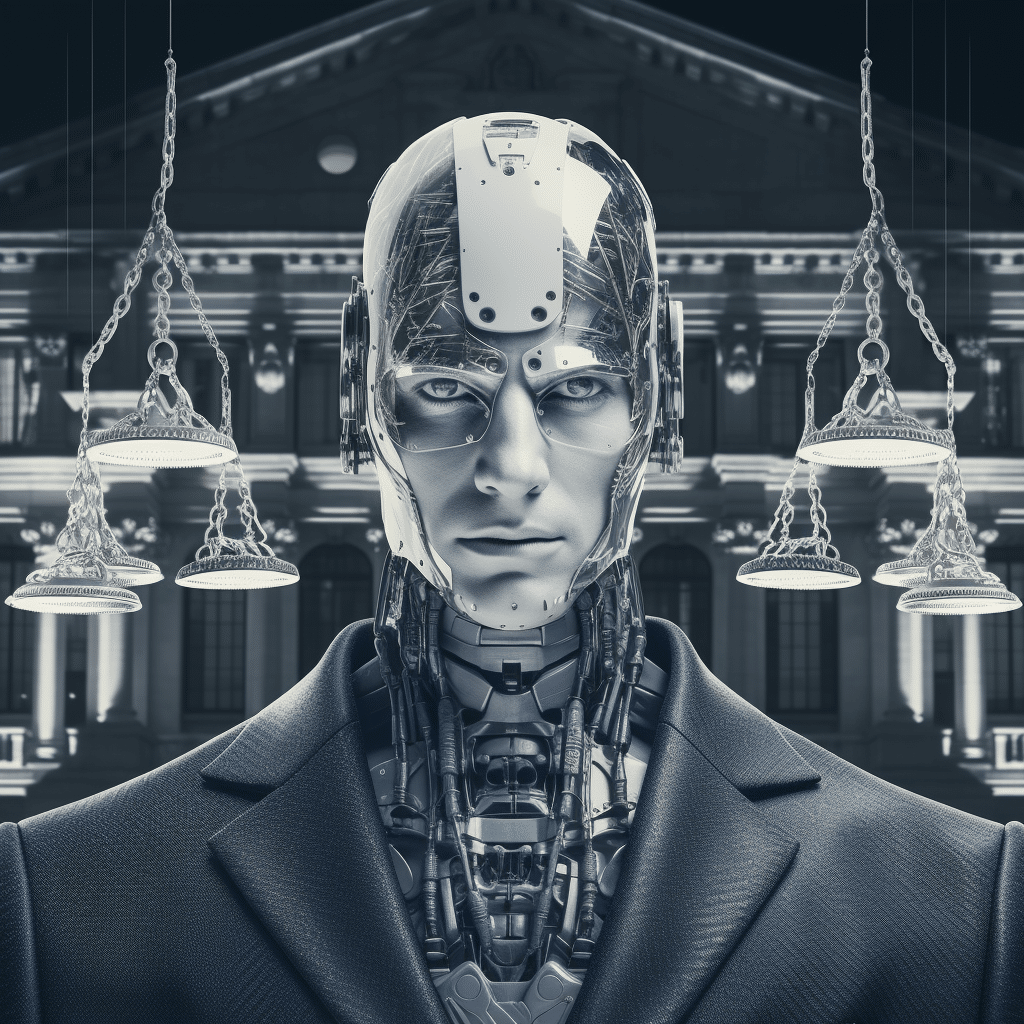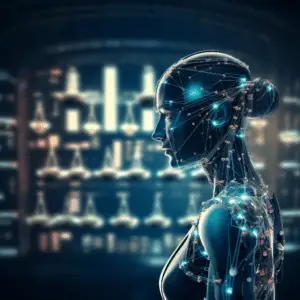
The Moral Dilemma of AI in Criminal Justice Systems
In recent years, artificial intelligence (AI) has played an increasingly prominent role within criminal justice systems around the globe. While the applications of AI in this field have shown great promise in terms of efficiency and accuracy, they have also raised significant moral dilemmas that demand careful consideration.

1. Bias and Discrimination
One of the greatest concerns regarding AI in criminal justice systems is the potential for bias and discrimination. AI algorithms heavily rely on historical data, which may contain prejudices and perpetuate the inequalities already present in our societies. If these biases are not adequately addressed and corrected, AI systems can unintentionally discriminate against certain demographics, leading to unjust outcomes.
2. Lack of Transparency
AI algorithms used within criminal justice systems often operate as “black boxes,” meaning that the reasoning behind their decisions is not always transparent or easily understandable. This lack of transparency raises significant ethical questions, as individuals subjected to AI-based decisions have the right to know how those decisions were made. The inability to explain AI’s reasoning can undermine trust in the system and impede the accountability that is essential for a fair and just legal system.
3. Overreliance on AI
While AI can significantly improve the efficiency and effectiveness of criminal justice systems, an overreliance on AI can have dire consequences. AI is not infallible and can make mistakes, especially if the data it was trained on is flawed or incomplete. Placing excessive trust in AI systems without human oversight can lead to wrongful convictions or the neglect of exculpatory evidence. It is crucial to strike the right balance between human judgment and AI-driven decision-making to preserve the fairness and integrity of our justice systems.
4. Lack of Human Judgment and Compassion
AI lacks human judgment, empathy, and compassion, qualities that are integral to the administration of justice. Legal cases often involve complex circumstances that require a nuanced understanding of factors beyond the scope of AI algorithms. The absence of human judgment in decision-making processes can diminish the ability to consider the context, intent, and mitigating circumstances of each case. While AI can be a valuable tool, it should not replace the core principles of empathy and compassion that guide our justice systems.
5. Systemic Reinforcement of Injustice
AI systems are only as fair as the data they are trained on. If that data reflects existing systemic injustices, such as racial profiling or socioeconomic biases, then AI may inadvertently perpetuate these injustices. It is incumbent upon criminal justice authorities to ensure that AI algorithms are thoroughly audited and continuously evaluated to prevent the amplification of existing societal biases.

Conclusion
The increasing use of AI in criminal justice systems presents both promises and perils. While AI can streamline processes and enhance efficiency, it also raises significant moral dilemmas, including bias and discrimination, lack of transparency, overreliance, absence of human judgment, and the potential reinforcement of systemic injustice. To address these challenges, it is crucial to prioritize ethical considerations, rigorous oversight, and human accountability to ensure the fair and equitable administration of justice in our societies.
What ethical considerations should be taken into account when implementing AI technologies in criminal justice systems, particularly in relation to sentencing and parole decisions
When implementing AI technologies in criminal justice systems, particularly in relation to sentencing and parole decisions, several ethical considerations should be taken into account:
1. Bias and Fairness: AI algorithms can perpetuate existing biases and discrimination present in historical data. Care should be taken to ensure that these algorithms do not disproportionately impact certain racial, ethnic, or socio-economic groups.
2. Transparency and Explainability: It is essential to make AI systems transparent and explainable so that individuals affected by the decisions can understand how they were arrived at. This also enables accountability and allows for potential errors or biases to be identified and corrected.
3. Privacy and Data Protection: Sensitive personal information is often used in AI algorithms. Safeguards must be in place to protect the privacy of individuals involved in the criminal justice system, and data should only be used for the intended purposes and with informed consent.
4. Human Oversight and Autonomy: While AI can assist in decision-making processes, ultimate control and responsibility should remain with human decision-makers. There should always be an option for human intervention and review to prevent arbitrary or unjust outcomes.
5. Recidivism and Rehabilitation: AI systems should aim to promote rehabilitation and reduce recidivism rates. Implementing technologies that help identify underlying causes and offer appropriate interventions can be vital in achieving this goal.
6. Long-term Impact Assessment: Regular evaluation of AI systems should be conducted to assess their impact on individuals and communities. This includes monitoring potential adverse effects, such as reinforcing existing biases or exacerbating social inequalities.
7. Equitable Access: Access to AI technologies and their benefits should be available to all individuals, including marginalized and disadvantaged communities. Implementations should not exacerbate existing inequities in access to justice.
8. Systematic Bias Elimination: Efforts must be made to identify and eliminate biases within the criminal justice system itself. Implementing AI technologies should not solely rely on imperfect historical data but rather strive to address systemic biases.
9. Public Engagement and Accountability: The use of AI technologies in criminal justice systems requires public engagement and input. Transparent decision-making processes and mechanisms for public oversight and accountability should be established.
10. Ongoing Research and Development: Continuous research and development efforts should be undertaken to improve the ethical use of AI technologies in criminal justice systems. Collaborations between diverse stakeholders, including experts from various disciplines, should be encouraged.
By addressing these ethical considerations, the implementation of AI technologies in criminal justice systems can be done in a manner that ensures fairness, accuracy, and accountability while respecting the rights and dignity of all individuals involved.
What are the potential ethical implications of using AI algorithms to predict and determine criminal behaviors, and how can we ensure fairness and transparency in these systems?
The potential ethical implications of using AI algorithms to predict and determine criminal behaviors are numerous and require careful consideration. Some of the key concerns include:
1. Bias and Discrimination: AI algorithms can perpetuate existing biases and discrimination prevalent in the criminal justice system, such as racial or socioeconomic biases. If these biases are present in training data, the algorithm may make biased predictions, leading to unfair treatment.
2. Privacy and Surveillance: The use of AI algorithms for predicting criminal behavior often involves collecting and analyzing large amounts of data, which can intrude upon individuals’ privacy. Maintaining a balance between public safety and personal privacy is crucial.
3. Lack of Human Judgment: Relying solely on AI algorithms to predict criminal behavior can undermine the role of human judgment and discretion in the criminal justice system. It is essential to consider the potential limitations of algorithmic decision-making and ensure human oversight.
4. Transparency and Explainability: AI algorithms can sometimes be considered black boxes, making it difficult to understand and explain how decisions are made. This lack of transparency can hinder trust in the system and impede accountability.
To ensure fairness and transparency in these AI systems, several measures can be taken:
1. Diverse and Representative Training Data: It is crucial to ensure that the training data used for AI algorithms represents diverse populations and is free from biases. This can help mitigate the risk of perpetuating discrimination.
2. Regular Algorithmic Audits: Regular audits of AI algorithms should be conducted to identify and address any biases or errors. Independent third-party audits can ensure accountability and transparency.
3. Interpretable Algorithms: Efforts should be made to develop AI algorithms that are explainable and interpretable. This would help users understand how decisions are made and identify potential biases or errors in the system.
4. Human Oversight and Judgment: Human judgment and oversight should be integrated into the decision-making process to prevent undue reliance on AI algorithms. Human decision-makers should have the ability to question and override algorithmic decisions when necessary.
5. Comprehensive Regulation: Governments and regulatory bodies should establish clear guidelines and regulations regarding the use of AI algorithms in predicting criminal behavior. These regulations should address issues of bias, privacy, and transparency.
6. Ongoing Monitoring: Continuous monitoring of the AI systems should be carried out to identify any biases or unintended consequences that may arise over time. Regular evaluation and refinement of algorithms and their impact can help ensure fairness and transparency.
Addressing the potential ethical implications of using AI algorithms in predicting criminal behaviors requires a multidisciplinary approach involving experts in law, ethics, computer science, and social sciences. It is essential to prioritize fairness, transparency, and accountability to ensure the responsible and ethical use of AI in the criminal justice system.








